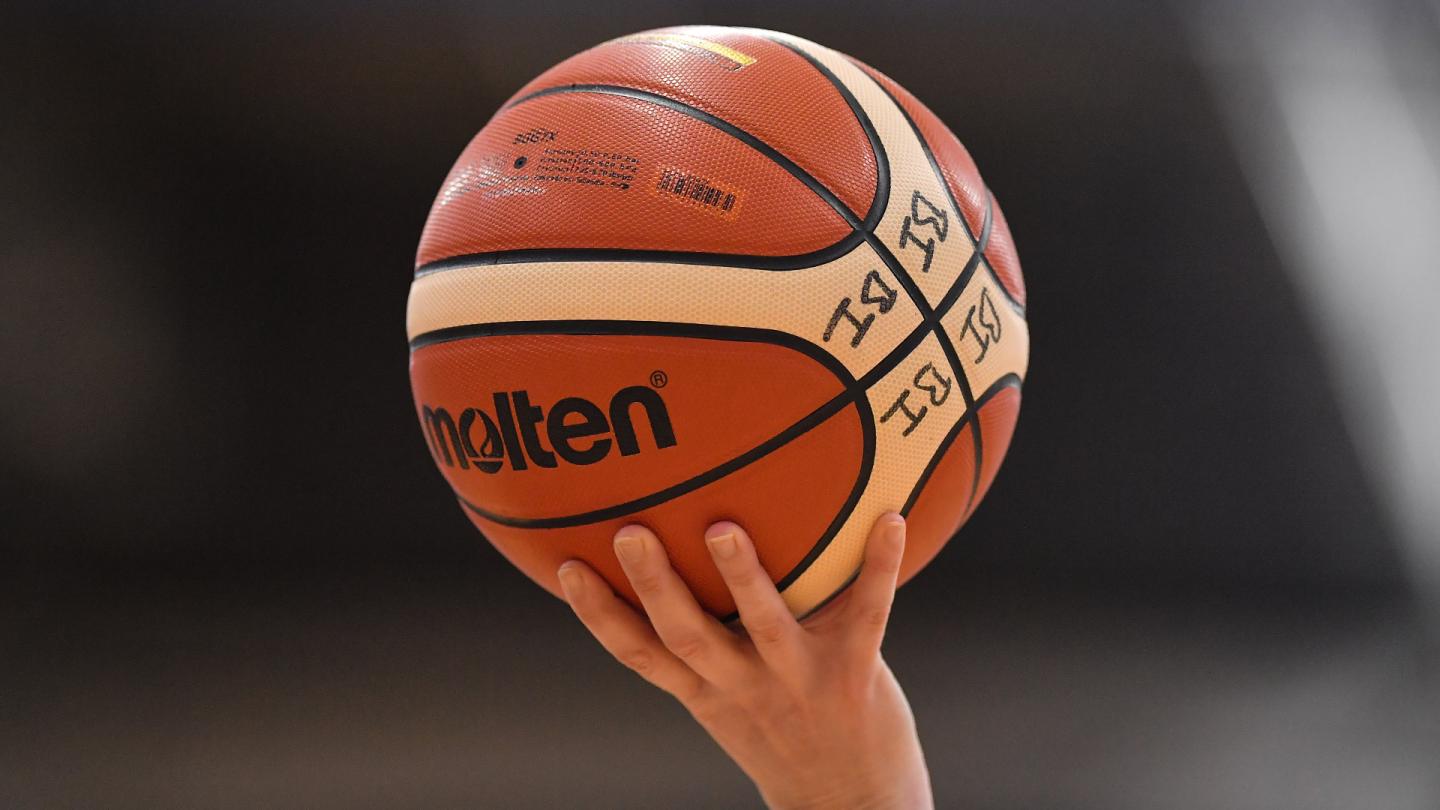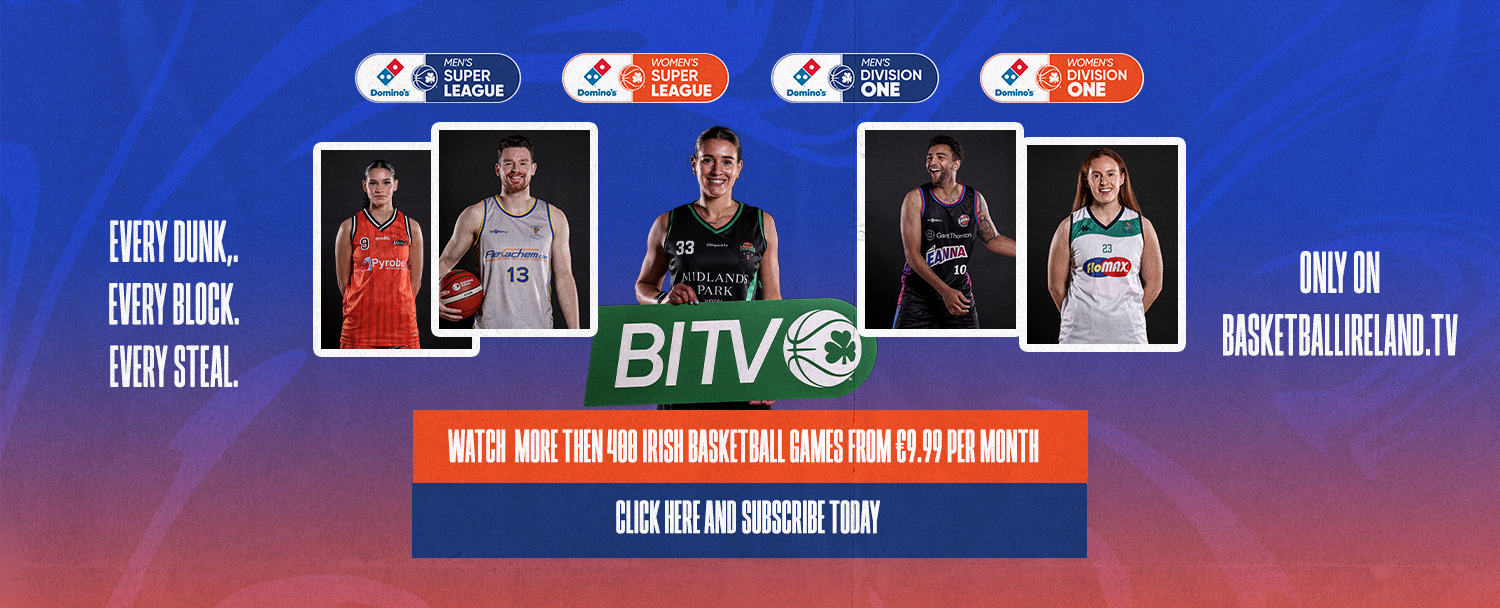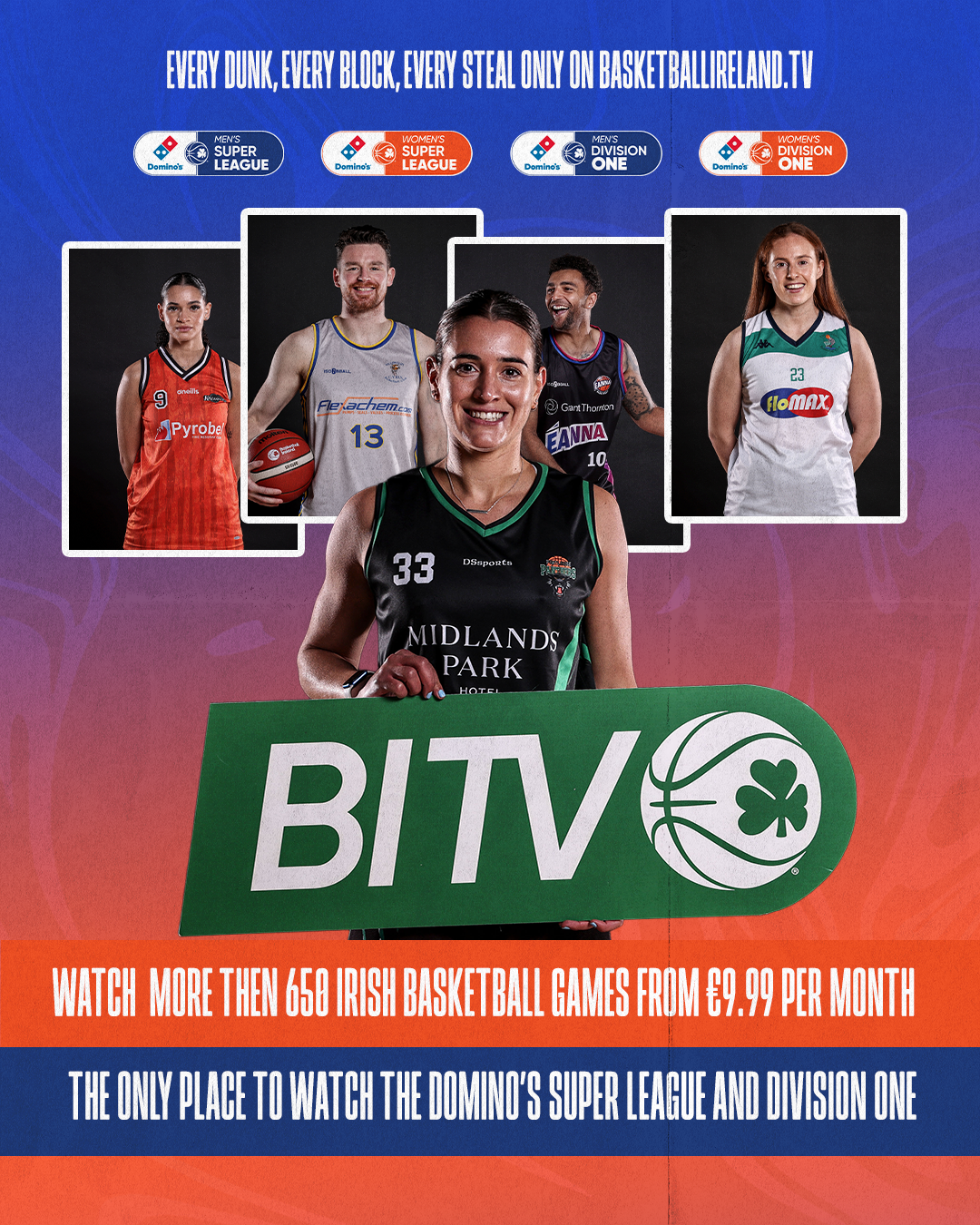National League

Updated guidelines for Basketball Ireland National Leagues
Updated guidance for Basketball Ireland National Leagues.
All items here are subject to the approval of Sport Ireland and their agreement. This guidance will assist all National Leagues to deliver a safe organised training and games and outlines those requirements.
This guidance does not constitute legal advice or replace any government or health advice; nor does it provide any commentary or advice on specific health-related issues for teams or individual athletes. This is guidance and any breach of this guidance will result in strong reprimand to the offender.
Guidance for Venue Entry
All participants should be asked for COVID Certificate, proof of recovery. As it is National League there are some considerations so lack of the Certificates does not stop participation. All participants must complete the COVID questionnaire and/ or use the COVID app before you leave your house and don’t travel if in any way unwell.
- All participants should have used the app before going to the venue, filled out the questionnaire on the app, however there should be a questionnaire at the door so they can fill it out there if needed.
- All persons should be aware of the symptoms of COVID.
- No person should go to the venue if they suspect they may have or have symptoms of COVID.
- No person should travel in an enclosed area with another person if they feel unwell or suspect they are unwell.
- If a person presents with a high temperature only, (which must be less than 37.5°c as recommended by the HSE), then the questions related to COVID symptoms should be asked. (see point 7 below)
- Retake temperature as it may have come down. (Recommend take the temperature 3 times and take the average of the 3 as some devices have a tolerance range that may be low.) The person may have been running to the venue.
The following questions should be asked.
- Do you have?
- Fever or Chills
- Cough
- Shortness of Breath
- Loss of smell or taste
- Fatigue
- Aches and pains
- Sore throat
- Headache
- Runny or stuffy Nose
- Feeling sick or Vomiting
- Diarrhoea
- Have you been around anyone that has tested positive for COVID in the last 48hrs?
- Have you been a close contact with any person who has had a test and has not received result, or is waiting for a test? ( see details below)
- If No to the questions in point 7 then retake temperature as it may have come down and refer to the section on “COVID reported after a session”, below. (Recommend take the temperature 3 times and take the average of the 3 as some devices have a tolerance range that may be low.)
- If yes to more than one item in point 7 then entry is not recommended.
- If yes to points k) i, ii, then no entry is allowed.
- If a person is unwell and has travelled on a bus/coach or in a group/ team then it is recommended all follow the guidance below.
- If a person has travelled in a car as a group and they are unwell or present with symptoms then follow the guidance below.
- Any person or group that has presented with symptoms should be advised to contact their health advisor and follow the instructions given by them.
No entry to anyone undergoing a PCR test, symptomatic or advised to quarantine.
All points here are guidance and are in line with the national health guidelines and the Basketball Ireland RTP guidelines.
All participants should be made aware of, understand and agree the requirements, so as to avoid any issue at the entry of the venue.
Venue Training
The venue for training. All participants should be asked for COVID Certificate, proof of recovery. As it is National League there are some considerations, so lack of the Certificates does not stop participation.
The COVID questionnaire or the COVID app should be used before any training.
All sanitisation and cleaning protocols to be followed. The flow of people entering and exiting will be through more than one entry/exit point and the allowable number can enter through one door and exit from another (e.g. Fire Exit).
- Normal Operating Procedures to be visible.
- Emergency Operating Procedures to be visible.
- Robust cleaning procedures in place and available on request.
- Only the team training allowed on the court (maximum of 25 including coaches, physio, and staff).
- Plan for changeover of teams after sessions so there is time to deep clean all areas and surfaces – COVID compliance/venue officer is responsible for the management of changeovers.
- Venue has to maximise ventilation opportunity – open doors, windows etc. – in order to reduce aerosol spread.
- See below on showers and toilet facilities.
- Suitable hand washing facilities must be available.
- Water fountains cordoned off.
- Hand sanitiser available at entrance to the building.
- Recommended:
- Hand sanitiser on court
- Regular disinfection of heavily used areas and surfaces
- Increased waste disposal bins and dedicated COVID-19 disposal signage
- Separate entrance and exits to the court and main building clearly signed
- COVID-19 symptom checker/poster at the entrance
- Available PPE for medical emergency and staff with knowledge on how to apply first aid within COVID-19 restrictions.
Venue Games
The venue for Games.
All sanitisation and cleaning protocols to be followed. The flow of people entering and exiting will be through more than one entry/exit point and the allowable number can enter through one door and exit from another (e.g. Fire Exit).
- CONTRACT TRACING:
The Home team is responsible for contract tracing. The Away team must inform the Home team in writing at least 12 hours before the game of who will be attending the game from their club. If there is an exceptional circumstance requiring a change in personnel, permission for the change must be obtained from the League Manager.
- PARENTS OF UNDER 18 PLAYERS:
One parent per child is allowed attend. The number of overall attendees varies from Level to Level, so refer to the current guidance on spectator attendance, as of the 7th of December 2021 it is 50% of the spectator capacity in the venue. If the attendance of parents would put the total number of attendees above the prescribed limit the game cannot go ahead unless the parents agree not to attend or the player is withdrawn from the game. The limit cannot be exceeded.
- ACCESS TO COURT:
At a minimum, teams must have access 30 minutes before tip-off. However, if another game has preceded the fixture time must be allowed for cleansing etc. as per guidelines. Ideally, there should be access between 30 minutes and 60 minutes before tip-off.
- DRESSING ROOMS & TOILETS:
Showers / Changing Rooms / Sports Clubhouse Gyms
- Where all individuals are vaccinated the full use of showers and changing rooms is permitted.
- Where individuals have mixed immunity status the use of these facilities should be pod based.
- The type of protective measures implemented will be determined by the type of facility users (i.e. vaccinated / mixed immunity). Sample protective measures may include:
- Limit overall duration of individuals in a changing room for example implement a 15 minute window / 5 minute shower rule etc.
- Implement adequate social distancing measures in changing areas for example the use of every second changing space/lockers/shower head etc.
- Recommend the wearing of masks in shared areas (showers an exception).
- Provide clear signage highlighting any relevant space capacities and time durations.
- Close off any unnecessary spaces or those not in use/not permitted.
- Monitor toilets with agreed capacity numbers and limit to participants/patrons only.
- Implement flow management systems where necessary.
- To improve ventilation consider an open window / open door policy (subject to privacy).
- Provide sanitisation stations as appropriate on entrances and in shared areas.
- Continue to promote hand hygiene and respiratory etiquette through signage, posters etc.
- Ensure deep cleaning of shared areas on a regular basis.
- In relation to Gyms and Training Facilities within sports clubs, these may operate in line with the broader permissions for indoor facilities. i.e. the use of pods of 6 for mixed immunity participants or no fixed limit for participants with proof of immunity.
- Appropriate protective measures and COVID protocols should be in place.
- Where venues permit it, dressing rooms may be used providing social-distancing sanitisation is enforced.
- Toilets can be used under the same conditions.
- BENCHES:
Benches can be used; players and coaches do not need to wear masks during the games.
- Maximum number of people
The Number changes as the government update their guidance. Current allowable attendance is 50% of the spectator capacity of the venue being used.
Hygiene Considerations
This is the guidance on maintaining good hygiene for players within basketball.
Preparation
- Arrive to the venue ready to play
- Use of changing rooms will be restricted and this should allow for hygiene/ shower after intense training to take place.
- When having touched high-contact surfaces such as door handles, benches, chairs, public computer keyboards etc. sanitise hands thereafter.
During Training/Playing
- Ensure all HSE, Sport Ireland, Basketball Ireland, Government and other guidelines are adhered to,
- Ball washing or wiping down with sanitise wipes prior to starting,
- No use of bibs unless brought directly by the player.
- No shared towels.
- No shared water bottles.
- ‘Crates’ of water may be provided but each bottle is for individual use not to be shared.
- No handshakes, high fives or other bodily contact except that of on court play,
- Have plenty of hand sanitiser available courtside with regular stoppages (the recommendation is every 30 minutes) for application.
- Social distancing rules apply when not on court,
- All balls cleaned before, during and after training.
- Once team practices commence, we recommend wiping balls every 30 minutes.
- Ball washing/wiping at the end of the session - everyone to wipe/wash their own.
- Immediate hand washing/sanitising once the session is complete.
- Recommended use of face masks for coaches, support staff and officials.
- Face masks for athletes during play is not required.
After Training/Games
- Immediate hand washing or hand sanitising for a minimum of 20 seconds.
- Showering or changing at the venue (Venue policies in place).
- No congregating at the venue after your game.
- No handshakes, high fives or other bodily contact.
If COVID-19 Reported After the Session. (This Includes training or Games.)
https://www2.hse.ie/conditions/covid19/
If a person thinks they have Symptoms of COVID
- If you have symptoms of COVID-19you need to:
Do these even if you are fully vaccinated against COVID-19 or had a positive PCR test in the past.
This means do not attend in any capacity training, matches or be a spectator until the result is know from the HSE.
- Immunity after COVID-19 infection
You are likely to be immune (protected) for at least 9 months after a COVID-19 infection.
During the 9 months you:
- are unlikely to become infected with COVID-19 again
- will not need to be retested unless you develop symptoms of COVID-19
- will not need to restrict your movements (stay at home) if you are a close contact of someone else who has COVID-19
You will have to provide a recovery certificate.
- Positive COVID-19 PCR test result
A positive result means the test found signs of COVID-19 (coronavirus).
3.1. Self-isolate (stay in your room)
- You need to self-isolate (stay in your room) because there is a high risk you could spread the virus to other people. Do this even if you do not have symptoms of COVID-19.
- Stay in a room on your own, with a window open for ventilation. Avoid contact with other people completely. Do not leave your room unless you need urgent medical attention, such as going to a hospital.
This means do not attend in any capacity training, matches or be a spectator.
3.2. Contact Tracing & your close contacts
Close contact can mean:
- spending more than a total of 15 minutes of face-to-face contact within 2 metres of someone who has COVID-19, (Positive PCR), indoors or outdoors, over a 24 hour period
- living in the same house or shared accommodation as someone who has COVID-19, (Positive PCR) - this includes sexual partners
- spending more than 2 hours in an indoor space with someone who has COVID-19, (Positive PCR) for example, a workplace, classroom, social venue, household or transport
3.3. Provide a list of your close contacts
- When you get a positive test result, you need to provide details of your close contacts to the contact tracing team. This is the law.
- List the details of your close contacts on the list your contacts website. You will need the 6-digit pin number you received in a text message from contact tracing.
- Before you start, write down their names, mobile phone numbers and when you were last in contact with them. If you know their address and date of birth, this is also helpful for the contact tracer.
- If you had symptoms of COVID-19 before your test, include close contacts from 48 hours before you developed symptoms.
- If you did not have symptoms of COVID-19 before your test, include close contacts from 24 hours before your test.
3.4. Who not to include on your close contact list
Do not include people:
- who were not in close contact with you
- you were in contact with more than 48 hours before you developed symptoms,
- or more than 24 hours before your test, if you did not have symptoms
- you saw briefly and did not touch, for example chatting to someone for a few minutes more than 2 metres apart
3.5. People who were not in close contact with you
If you test positive for COVID-19, anyone who was not in close contact with you does not need to restrict their movements. For example, people who live with your close contacts, or friends of your close contacts.
- They will not get a call from contact tracing.
If they develop symptoms, they should:
- self-isolate (stay in your room)
- get a COVID-19 PCR test
3.6. If you are a close contact of COVID-19
If you are a close contact of a person that tests positive for COVID-19 (coronavirus), there's a chance that you may have COVID-19 too.
What you need to do depends on if you are:
- fully vaccinated against COVID-19, or not
- a household or non-household close contact
3.6.1. Household Close Contact that is Fully Vaccinated
Here's what you need to do if you are a household close contact who is fully vaccinated against COVID-19.
Testing
- You need to do 3 antigen tests with 2 days between each test.
- This does not apply if you had a positive PCR test in the last 9 months. (Recovery Certificate)
- If you have a weak immune system, you may also be offered a COVID-19 PCR test by text message.
Restricted movements
- You need to restrict your movements (stay at home) for 5 days from when you get the close contact text message from the HSE.
- This does not apply if you had a positive PCR test in the last 9 months.
If you have symptoms of COVID-19 you need to:
Do these even if you are fully vaccinated against COVID-19 or had a positive PCR test in the past.
3.6.2. NON-Household Close Contact that is Fully Vaccinated
Here's what you need to do if you are a non-household close contact who is fully vaccinated against COVID-19.
Testing
- You need to do 3 antigen tests with 2 days between each test.
- This does not apply if you had a positive PCR test in the last 9 months.
You do not need to get a PCR test unless:
- one of your antigen tests is positive
- you develop symptoms of COVID-19
If you have a weak immune system, you may be offered a COVID-19 PCR test by text message.
Restricted movements
- You do not need to restrict your movements (stay at home).
- But, if any of your antigen tests are positive, you should self-isolate (stay in your room)and get a COVID-19 PCR test.
If you have symptoms of COVID-19 you need to:
Do these even if you are fully vaccinated against COVID-19 or had a positive PCR test in the past.
3.6.3. Any Close Contact that is Not Fully Vaccinated
If you are a close contact who is not fully vaccinated against COVID-19, the advice is the same whether you're a household or non-household close contact. It also applies to partially vaccinated people too.
Testing
- You need to get a COVID-19 PCR test. We will send you a text message to arrange this. Some people will need to do 2 PCR tests. We will let you know if you need to.
- But, if you had positive PCR testin the past 9 months you do not need another test unless you develop symptoms of COVID-19.
- If you had COVID-19 over 9 months ago, you need to get the PCR test we arrange for you as a close contact.
Restricted movements
- You need to restrict your movements (stay at home) for 14 days from when you get the close contact text message from the HSE.
- You can stop restricting your movements if you get a negative PCR test result on day 10. That is, 10 full days after your last contact with the person who tested positive.
- If you had a positive PCR test in the past 9 months, you do not need to restrict your movements.
If you have symptoms of COVID-19 you need to:
Do these even if you are fully vaccinated against COVID-19 or had a positive PCR test in the past.
- Negative PCR test result (COVID-19 not detected)
If your PCR test is negative, you’ll get a text message to say that the test did not detect COVID-19. This means that the virus was not found in your sample.
A negative PCR test result does not mean that you’ve never had COVID-19.
It’s possible that you had the virus, but that:
- your immune system cleared it by the time you were tested
- there was no virus present in the sample taken
4.1. If you have symptoms
If you were tested because you have symptoms of COVID-19,
- self-isolate (stay in your room) until you have not had any symptoms for 48 hours.
- Do this even if you are fully-vaccinated.
- You can return to your normal activities when you have not had symptoms for 48 hours. This includes going to work or school.
If your symptoms continue or get worse, phone your GP
4.2. Negative PCR test Close contacts, Vaccinated.
4.2.1. Fully vaccinated and a household close contact
- You should continue to restrict your movements for 5 days from the day you are told you are a household close contact. Do this even if you have no symptoms.
- You will also need to do 3 antigen tests with 2 days between each test.
4.2.2. Fully vaccinated and a non-household close contact
- You do not need to restrict your movements, as long as you do not have symptoms.
If you develop symptoms:
- get a COVID-19 PCR test
- self-isolate (stay in your room)
4.2.3. Non-vaccinated or not fully vaccinated close contact.
- You should continue to restrict your movements (stay at home)for 14 days.
- Do this from the last date you were with the person who tested positive for COVID-19.
- If you’re not sure when that was, restrict your movements from the date you were told you were a close contact.
- You can stop restricting your movements early if you had your test 10 days or more after you were last with the person who has COVID-19, get a negative result and you have no symptoms.
If you develop symptoms:
Second test
- If you are not fully vaccinated, are a close contact and get a negative PCR result, you will usually need to have a second PCR test.
- This is because it can take time for the virus to show up in your system. You will be told if you need a second PCR test.
Note on the Above guidance.
This note relates to training and games.
- All participants (players, coaches and support staff) in the training session/ game have a responsibility to notify the COVID-19 Compliance Officer should they get symptoms of COVID-19 within 48 hours of the training session.
- Anyone with symptoms should call their doctor or health care doctor.
- COVID-19 Compliance Officer to direct the infected individual to the National Government’s Contact-tracing procedures. In addition to the above advice, the COVID Compliance Officer must contact all individuals that attended the training session in question to advise that an individual within that group has reported symptoms.
- If a member of a team presents with symptoms within 48 hours of a training session/game and has been in contact with other players, coaches and officials, then follow the guidance above.
- The player will have to stop activities and get tested.
- Any symptomatic individual must follow the guidance above as outlined by the HSE.
- The team will have to monitor for symptoms. ( team here means any person involved in the activity that may have been in close contact)
- If the test is negative then the player must not return to activities until the player is symptom free for at least 48hrs, only then return to activities.
- The team may return to activities if in line with the guidance as outlined above and as per the HSE but must watch for any symptoms that may be related to the COVID virus. Report any symptoms to the COVID Compliance Officer.
- If the test is Positive then the player will be given advice from the doctor or Health care professional and should follow this advice. The HSE or the Public health medical advice team will give advice to the other people that were considered close contact with the person.
- Our protocols remain, but the HSE and Medical advice team has to be followed above these protocols in a confirmed case situation.
- The name of the infected individual is not to be disclosed to protect anonymity.
- COVID-19 Compliance Officer should complete the COVID-19 incident reporting form, Basketball Ireland COVID-19 Screening Document.




